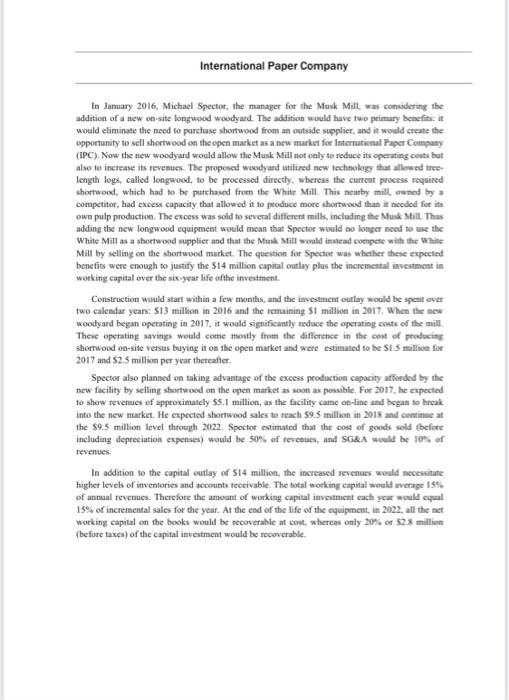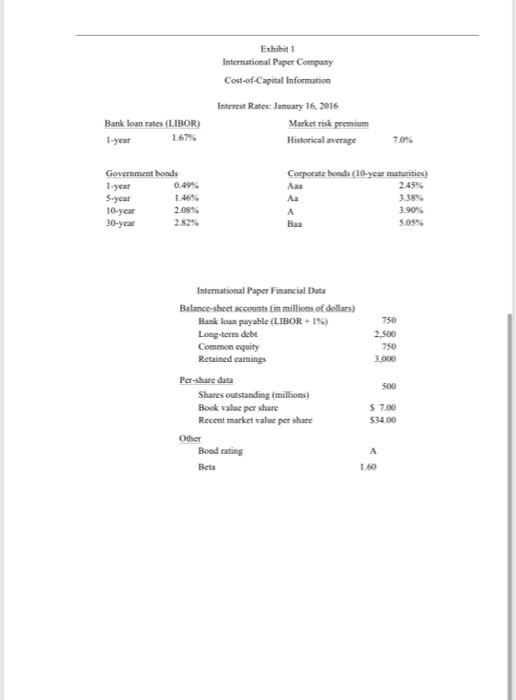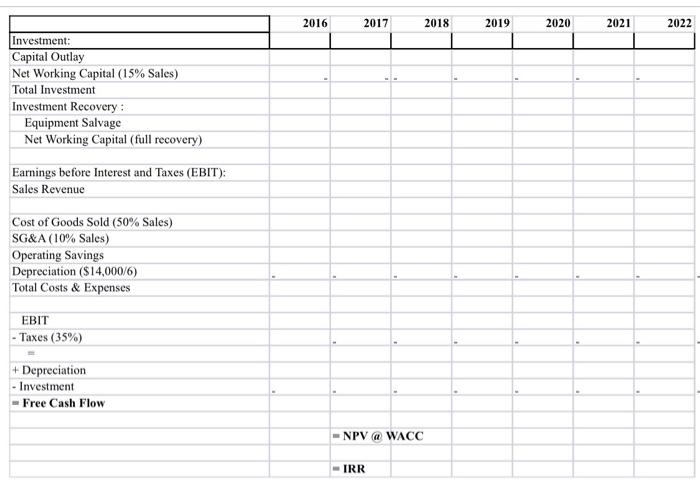International Paper Company In January 2016, Michael Spector, the manager for the Musk Mill was considering the addition of a new on-site longwood woodyard. The addition would have two primary benefits it would eliminate the need to purchase shortwood from an outside supplier, and it would create the opportunity to sell shortwood on the open market as a new market for International Paper Company (IPC). Now the new woodyard would allow the Musik Mill not only to reduce its operating costs but also to increase its revenues. The proposed woodyand utilized new technology that allowed tre length logs, called longwood, to be processed directly, whereas the current process required shortwood, which had to be purchased from the White Mill. This nearby mill, owned by a competitor, had excess capacity that allowed it to produce more shortwood than it needed for its own pulp production. The excess was sold to several different mills, including the Musk Mill. Thes adding the new longwood equipment would mean that Spector would no longer need to use the White Mill as a shortwood supplier and that the Musik Mill would instead compete with the White Mill by selling on the shortwood market. The question for Spector was whether these expected benefits were enough to justify the 514 million capital outlay plus the incremental investment in working capital over the six-year life of the investment Construction would start within a few months, and the investment outlay would be spent over two calendar years: S13 million in 2016 and the remaining S1 million in 2017. When the new woodyard began operating in 2017. it would significantly reduce the operating costs of the mill These operating savings would come mostly from the difference in the cost of producing shortwood on-site versus buying it on the open market and were estimated to be St S million for 2017 and $2.5 million per year thereafter Spector also planned on taking advantage of the excess production capacity afforded by the new facility by selling shortwood on the open market as soon as possible. For 2017, he expected to show revenues of approximately $5.1 million, as the facility came on-line and began to break into the new market. He expected shortwood sales to reach 59.5 million in 2015 and continue at the $9.5 million level through 2022. Spector estimated that the cost of goods sold before including depreciation expenses) would be so of seventies, and SG&A would be 10% of revenues In addition to the capital outlay of 514 million, the increased revenues would necessitate higher levels of inventories and accounts receivable. The total working capital would average 15% of annual revenues. Therefore the amount of working capital investment cach year would equal 15% of incremental sales for the year. At the end of the life of the equipment, in 2022. all the net working capital on the books would be recoverable at cost, whereas only 20% or $2.8 million (before taxes) of the capital investment would be recoverable Exhibit 1 International Paper Company Cost-of-Capital Information Interest Rate: January 16, 2016 Market risk premium Historical average Bank loan rates (LIBOR) 1-year 1.67% 7.0% Government bonds 1-year 0.49% 5-year 10-year 2.08% 30-year 2.82% Corporate bonds (10-year maturities) Aaa 2.45% Aa 3.389 3.909 5.05% Baa 750 2.500 3.000 International Paper Financial Data Balance sheet accostsin millions of dollars) Bank loan payable (LIBOR19) Long-term debt Common equity Retained camings Per-share data Shares outstanding (millions) Book value per share Recent market value per share Other Bond rating Beta 500 $ 7.00 5340 1.60 2016 2017 2018 2019 2020 2021 2022 Investment: Capital Outlay Net Working Capital (15% Sales) Total Investment Investment Recovery: Equipment Salvage Net Working Capital (full recovery) Earnings before Interest and Taxes (EBIT): Sales Revenue Cost of Goods Sold (50% Sales) SG&A (10% Sales) Operating Savings Depreciation (S14,000/6) Total Costs & Expenses EBIT - Taxes (35%) + Depreciation - Investment Free Cash Flow NPV @ WACC IRR










